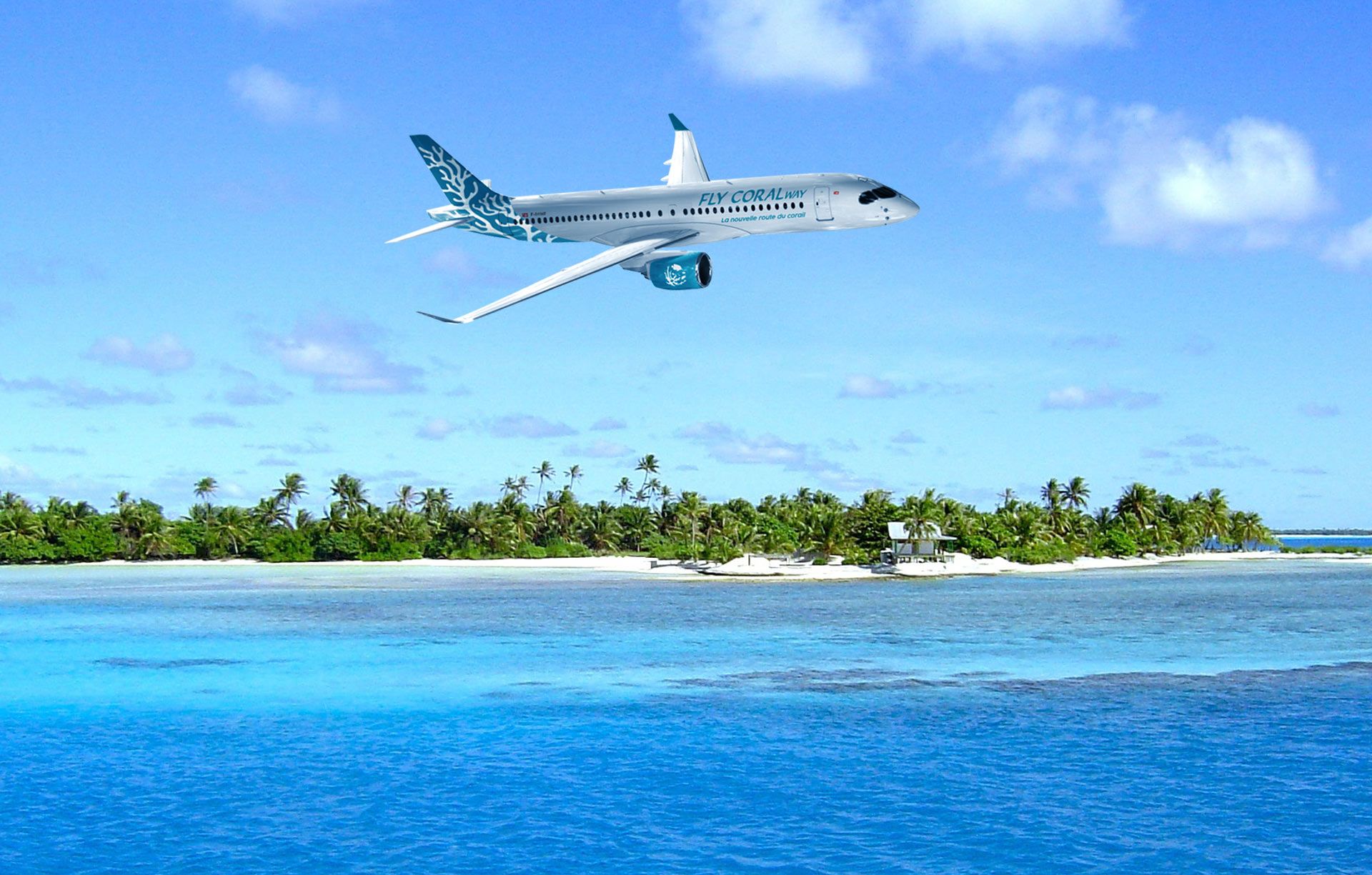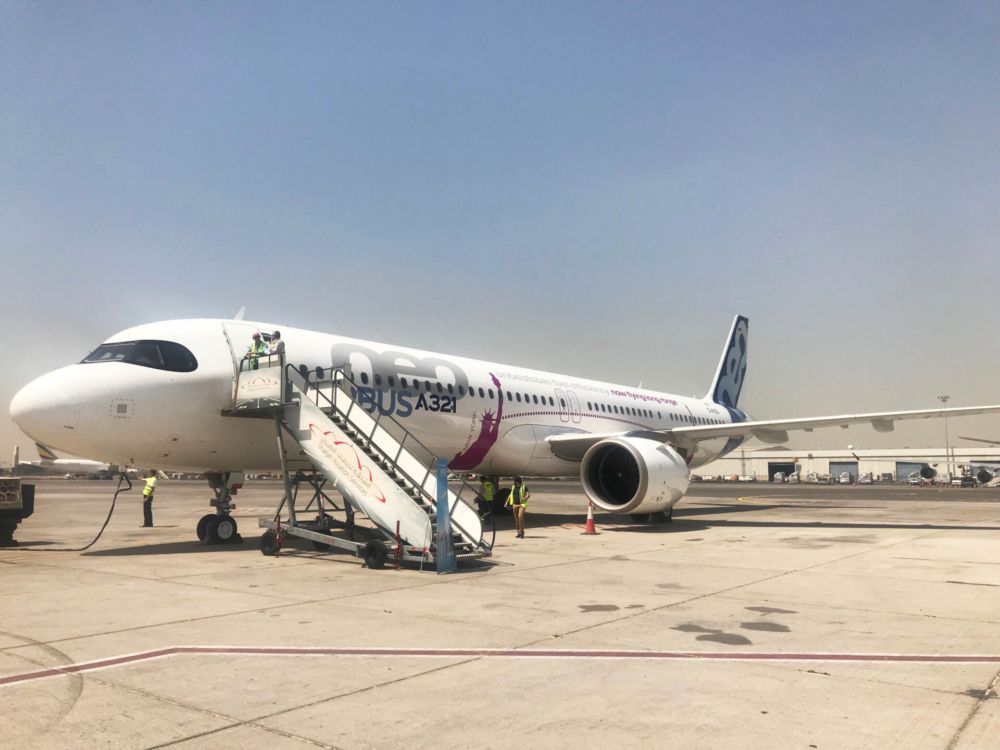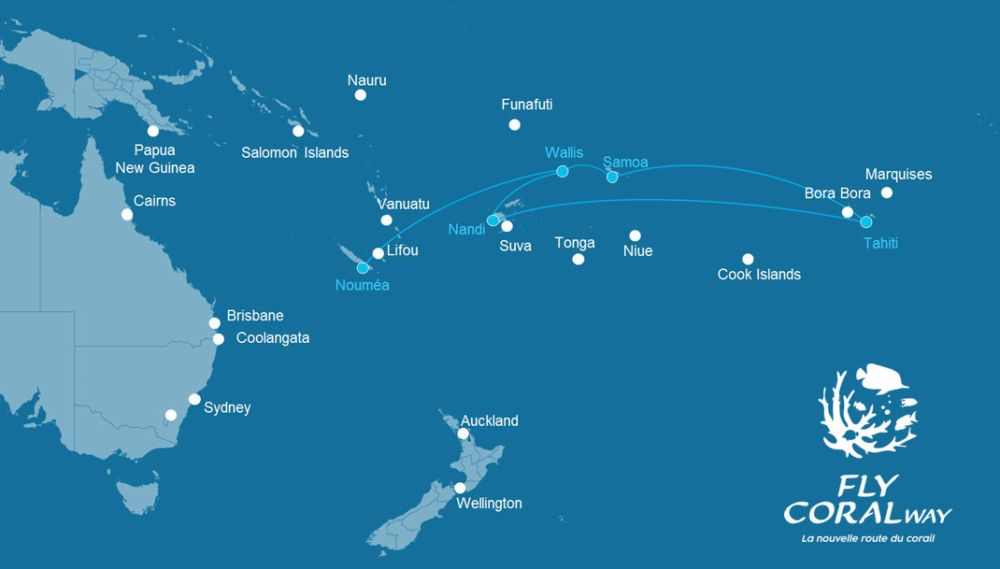FLY CORALway has had to adapt its plans ahead of its targeted launch in mid-2022. Nonetheless, a factor that has remained a top priority for the carrier is increasing connectivity to French Polynesia. Simple Flying recently caught up with the carrier’s CEO, Olivier Moana Bôle, about his company's network strategy.
Pacific Priorities
Based in French Polynesia, the carrier has a mission to link the Pacific islands with the international community. Bôle highlights even though the region is often promoted as an exotic destination, the requirements of the country run far deeper than being a tourism hotspot. The everyday communities of the area have real needs, and Bôle expresses that there is a demand for an aviation industry transition to bring the region up to scratch with the rest of the world.
Regional activity from French Polynesia is the initial plan. The overseas collectivity of France already has a carrier in the form of Air Tahiti Nui and has several international carriers flying in from the likes of the United States and Europe. Therefore, the requirement is to now connect the various South Pacific communities and cater to the increasing tourism demands at the different hubs with international entities.
There are three core regional markets on the horizon for FLY CORALway. These are split by the following:
- Hawaii: Bôle shares that there is one weekly flight from Honolulu conducted by Hawaiian Airlines. There needs to be greater frequency and packages between the two island regions.
- Fiji: There are no existing routes between Tahiti and Fiji. There is potential to utilize Singapore and Hong Kong as transfer points.
- New Caledonia: There are three French territories in the South Pacific, French Polynesia, New Caledonia, and Wallis and Futuna. All three populations exchange with each other. The intention is to develop routes where there are limited flights and create new opportunities.
Other destinations in the Pacific are one the cards. For instance, there are plans for routes to Samoa. There is a sizeable Samoan diaspora, and members often have to take multiple flights to meet their families. FLY CORALway is keen to make the experience easier for these travelers.
Going hand in hand
Nonetheless, tourism still fits in within the model. This sector fits in with the needs of the communities.
“Today, in French Polynesia, for example, you've got destination tourism. The tourists are coming to French Polynesia, spending their holidays between the different islands in French Polynesia, and going back home. We have no possibility, except via Auckland, to fly within the region. So, the real interest is to open a separate tourism sector to allow the tourists to visit different islands,” Bôle told Simple Flying at the Future Flying Forum.
“We have the French touch in French Polynesia, including the very famous Bora Bora. But we are giving them the possibility to include in their package Samoa, Cook Islands, or Fiji before going back home. So, the real intention is to create new routes within the Polynesian triangle, to offer new options for the communities and for tourism. We are in countries where tourism is the first economy for our societies. So, having air services in between the different countries, and increasing the number of seats available is crucial for tourism development.”
Stay informed: Sign up for our daily and weekly aviation news digests.
Working with others
International partnerships will be a primary objective for FLY CORALway following the network development. Strategic agreements with different carriers that serve the region will be key for the model to fulfill its potential.
“In the case of French Polynesia, part of the market will come from the US. We've got four main airlines flying from French Polynesia to the country. We've got three French ones. Then we've got United. United is very interesting because they are flying to French Polynesia three times a week, and they are flying to Hawaii,” Bôle added.
“If I take the example of selling packages to the US market, we could fly a triangle route between the US mainland, Hawaii, French Polynesia, and back to the US, increasing the frequencies between Hawaii and Tahiti. Working with Air Tahiti Nui should give the sense to give them the possibility to catch a new market, new regional markets, that today are flying through elsewhere. They could fly via Tahiti afterward with transpacific flights.”
This approach spreads to other airlines such as Fiji Airways. The interest between Tahiti and Fiji is revolved around connecting on morning flights to Asia. Ultimately, FlyCORALway is not competing against Fiji Airways. The company is looking to link with the firm's daily flights to the likes of Singapore, Hong Kong, and China to increase connectivity.
Gearing up for launch
Airbus' narrowbody jets will be seen on the airline's routes. The A320 family will undoubtedly be a great fit on inter-island hops across the ocean. Bôle was initially hoping to launch the airline last year. His team spent two years studying the market and working on a strategy. However, the global health crisis didn’t help matters in regard to commencing operations.
Right now, the focus heading into 2022 is to secure investment. Presently a figure between €12 and €15 million ($13.5 and $17 million) is the goal. Regardless, Bôle remains excited about connecting his home of French Polynesia with the world in this next chapter.
What are your thoughts about FLY CORALway’s potential network? What do you make of the market that the company is looking to focus on and the aircraft that it is looking to fly? Let us know what you think of the airline and its plans in the comment section.




